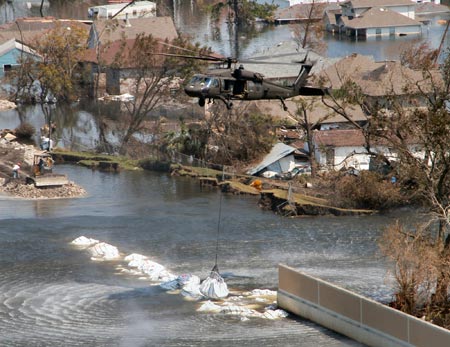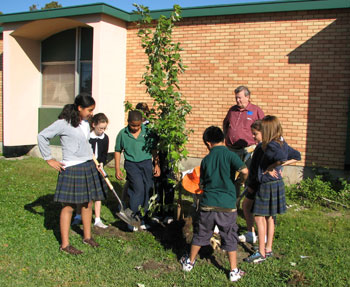By Michelle Werts

Eight years ago today, Hurricane Katrina made landfall in Louisiana. The level three category hurricane unleashed upward of 10 inches of rain on the Gulf Coast with winds at speeds greater than 140 mph.
By the time the storm dissipated a day later, more than 80 percent of New Orleans was flooded, while cities, communities and ecosystems across the Southeast began to deal with the fallout from the intense winds and massive storm surges. Katrina affected millions of acres of urban and rural forest and is the most costly storm in U.S. history, causing more than $100 billion worth in damages.
Compounding matters was the arrival of a second storm, Hurricane Rita, not even a month after Katrina battered the Gulf Coast. The Washington Post described the two as contributing to “the largest single forestry disaster on record in the nation.”
Less than a year after the terrible twosome, American Forests Global ReLeaf began to help rebuild both urban and rural Gulf Coast forests.
- We planted trees in Florida’s Gulf Island National Seashore to replace damaged longleaf and shortleaf pine, as well as live oak, wax myrtle and dwarf sabal palm trees. These trees are helping prevent shoreline erosion, while creating a storm buffer zone and providing habitat for bird and mammal species.
- We completed assessments to help our partners in Mississippi craft a six county reforestation plan designed to address the state’s loss of 300,000 trees to Hurricane Katrina.
-

Students plant trees in Jefferson Parish as part of American Forests Katrina ReLeaf efforts. Credit: American Forests In Louisiana, we supplied trees to rebuild the New Orleans City Park, which lost 1,000 trees to the storm, and also worked with Jefferson Parish to restore the community’s urban forest.
All told, we have planted more than 139,000 trees in Louisiana, Mississippi and Florida to aid in hurricane recovery efforts since 2006. Of course, an ecosystem can often take decades — or even centuries — to return to its pre-natural disaster state. [Check out our American Forests magazine feature “Recovering From Disaster” for more on how ecosystems are affected by and regenerate after natural catastrophes.] Every year, though, we are committed to chipping away at the issue, helping diverse landscapes recover from a variety of ailments — natural disasters, invasive pests, disease, climate change — but we need your continued support and help. If you’re not already, please consider becoming an American Forests member today to help us continue our mission of protecting and restoring forests.